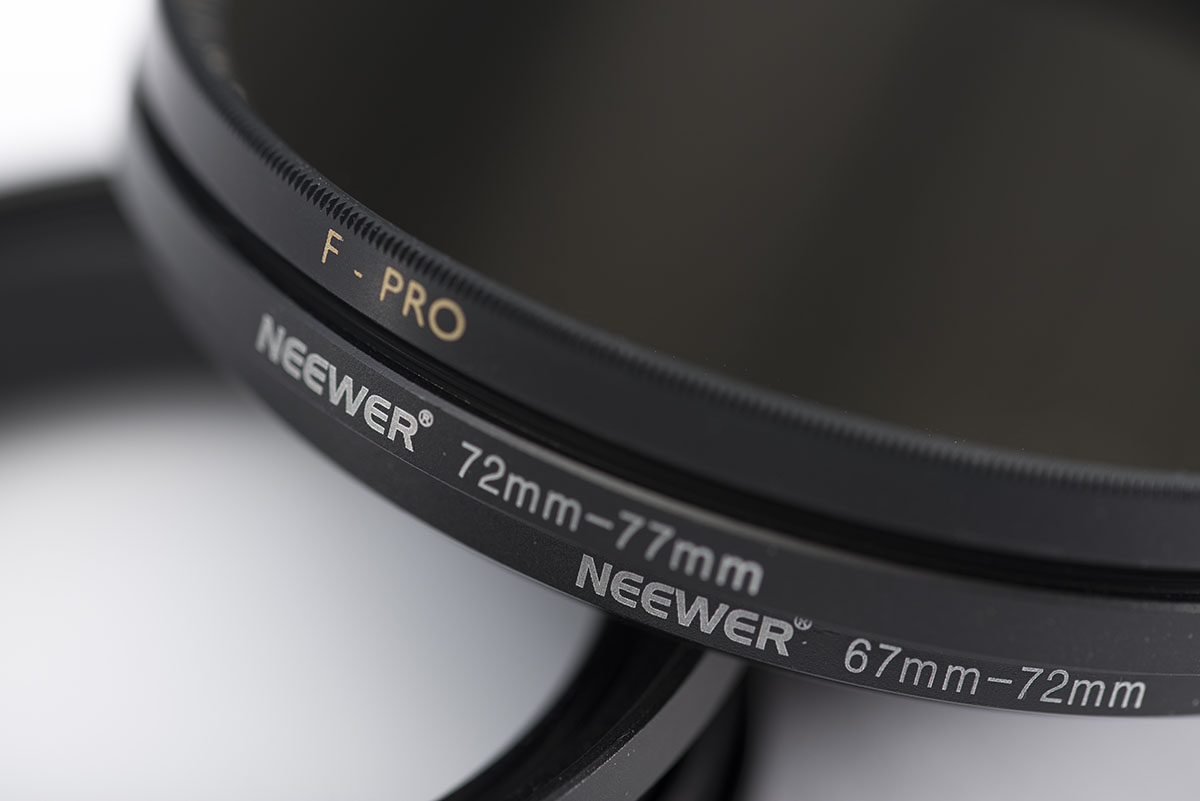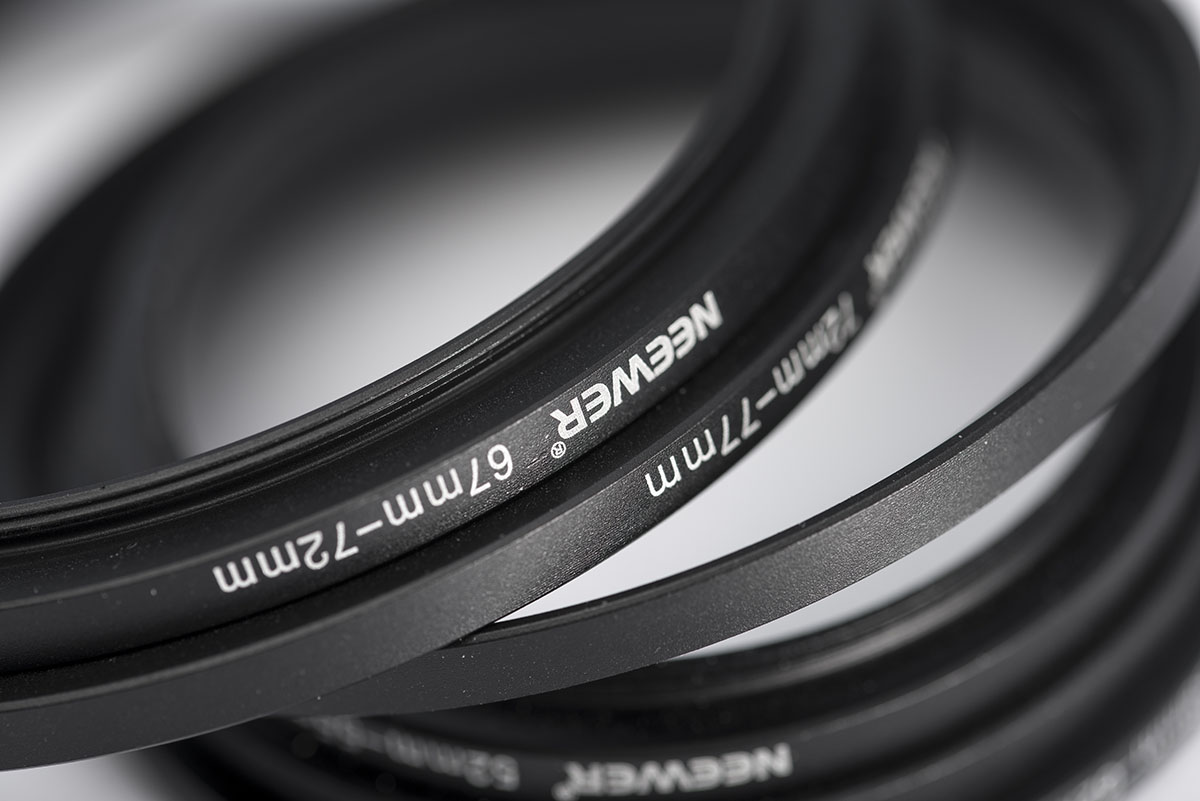Save Money on Filters with Step-Up Rings
Why buy filters of different sizes when your largest filter would work on all your smaller lenses? This is what step-up rings allow you to do. Instead of having a different filter for each lens size, you can buy one filter and adapt it to other sizes with screw on rings that have one filter size on the front and another on the back.

Step up rings allow you to save space in your camera bag as well as money, and are very inexpensive. You can get a single ring for most sizes for around $5. This is useful if you only have a couple lenses you plan to use the filter on - just buy the filter for the larger lens, and get the right adapter for the smaller one. For example, you might have a lens with 77mm filter threads, and another with 62mm filter threads. Buying a 77mm filter and a 62mm to 77mm step up ring allows you to use the same filter with both lenses.
Now, there is a disadvantage - the lens hood likely won’t fit over the filter when you use step up rings. This could lead to some flare problems, but if you buy a decent filter it’s not usually a problem. Just be aware of that, and maybe shade the lens with your hand if necessary.
Also be careful that you get step up rings, and not step down rings. Step down rings are for using a smaller filter on a larger lens, and due to the heavy vignetting they cause they’re generally useless. Both look very similar, so just check the name, description, and reviews to ensure you’re getting the step up rings.

If you have lots of lenses of various sizes, you can save a bit more money by buying a set of step up rings, such as 52mm-55mm, 55mm-58mm, 58mm-62mm, 62mm-67mm, 67mm-72mm, and 72mm-77mm. This is also good if you have other filter sizes you want to use, or don’t know what lenses you’ll have in the future. Instead of using a 62mm-77mm ring as in the previous example, you stack three rings to get the same effect. I personally use this set from Neewer. Despite the low cost, I find the quality’s great and they’ve worked very well for me. Neewer also has a kit that covers all the same sizes with the addition of 77-82mm, and it’s the same price as of this writing, so check it out here
. (Note that both links are Amazon affiliate links, so if you buy after clicking one of them I’ll get a small percentage of the sale, which helps keep this site running. But you can easily find these products via a Google search if you prefer.)
Now, this does mean vignetting could be an issue with wider lenses, since this is much less thin than a single ring. I’d hesitate to use more than one step-up ring with lenses wider than 35mm on full frame, or 24mm on crop sensors. So for wide angle lenses, your best bet is to have a filter that fits the lens, or you could get away with a step up ring or two if the filter’s diameter is much larger than the lens’s filter ring.

Step up rings are best for circular polarizers and ND filters. With UV filters you tend to want one for every lens anyway, and you leave them on pretty much all the time so it’s more important to be able to use a lens hood with them. With ND filters and polarizers though, you can save hundreds of dollars by using the same filter on all your lenses.
The Neewer brand of step up rings I use seem to be a decent buy, and have lots of sizes available. They’re made of aluminum rather than brass, but so far they’ve worked perfectly during the year or so I’ve had them. Step up rings are very simple though, so I’d expect most manufacturers are able to make good ones. Be careful to not squeeze the rings while unscrewing them though, as this will make it harder to unscrew and possibly damage them if you squeeze very hard. Also watch out for sand - sand grains in the threads of any filter or ring will cause issues, so be extra careful in deserts or at beaches.
Get the free guide to learning photography faster by signing up to the email list here!
Lauchlan Toal is the creator of UnlockCreativePhotography.com, and a Halifax based food photographer. Outside of food photography, he enjoys most genres, finding fun in any kind of photography challenge.